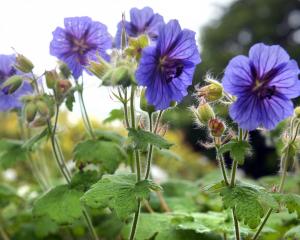
Musa acuminata ‘Dwarf Cavendish’ is doing that now in the central house of the winter garden glasshouse, producing large bunches of sweet fruit on a fairly small plant.
Staff hear a lot of people coming through the winter garden looking for the ‘‘banana palms’’. This isn’t quite correct because palm trees form a hard wooden trunk, whereas bananas don’t. Musa species form what is called a pseudo stem. This false stem is made up of the leaf sheaths tightly packed together. It never forms any hard wood and is mostly water but can support a bunch of bananas that can weigh up to 50kg or more.
Musa are large, suckering evergreen perennials; Musa acuminata ‘Dwarf Cavendish’ can reach a height of 2m-3m and produce leaves up to 1.2m long. Each stem will flower only once and then die, but more stems will rise from suckers.
A tropical plant, Musa acuminata ‘Dwarf Cavendish’ will grow well in a glasshouse and can do well as a house plant although it may not fruit or flower.
Musa likes plenty of warmth, organic matter and water to grow well because they’re heavy feeders. Plenty of sun and a long growing season is the key to getting good fruit. They also need to be lifted and divided, like most perennials, every three to four years to keep plants vigorous and growing well.
- Garden Life is produced by Dunedin Botanic Garden. For further information contact Stephen Bishop.











